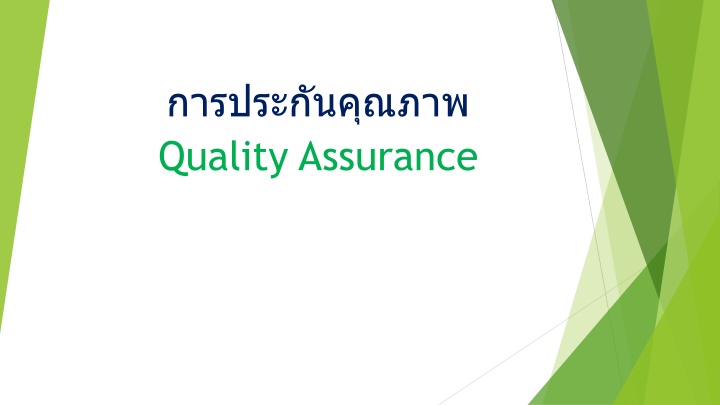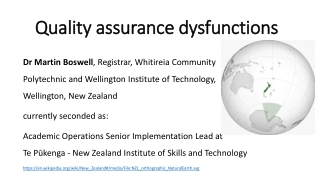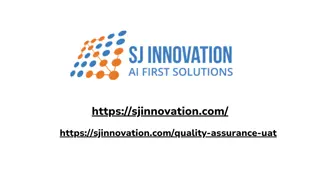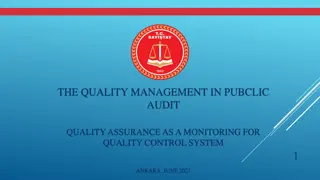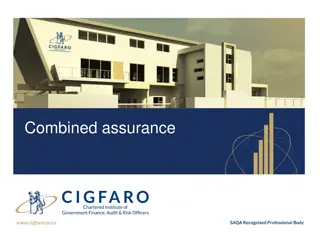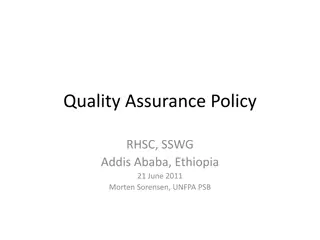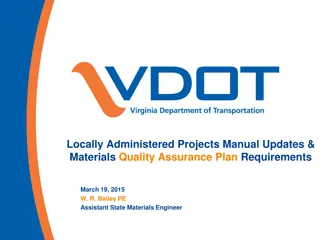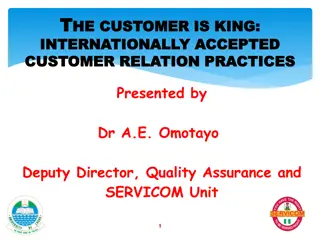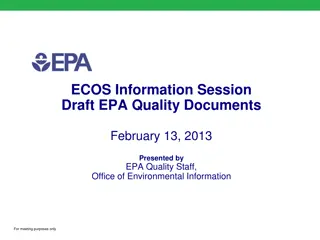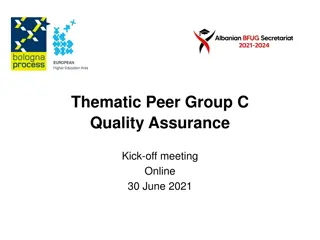Quality Assurance
Explore the stages of the quality assurance process - Plan, Do, Check, Act/Adjust - and understand how quality assurance technicians and managers set clear goals, implement processes, evaluate outcomes, and make improvements. Learn about the national educational standards guiding institutions towards desired educational outcomes.
Download Presentation

Please find below an Image/Link to download the presentation.
The content on the website is provided AS IS for your information and personal use only. It may not be sold, licensed, or shared on other websites without obtaining consent from the author.If you encounter any issues during the download, it is possible that the publisher has removed the file from their server.
You are allowed to download the files provided on this website for personal or commercial use, subject to the condition that they are used lawfully. All files are the property of their respective owners.
The content on the website is provided AS IS for your information and personal use only. It may not be sold, licensed, or shared on other websites without obtaining consent from the author.
E N D
Presentation Transcript
(Quality Assurance)
PDCA The 4 stages in the quality assurance process are: - (Plan - P) - (Implement(Do) - D) - (Check - C) - (Adjust (Act) - A)
Stage 1: PLAN In this first crucial stage, a quality assurance technician or manager will determine clear-cut goals to produce high-quality products and suggest suitable processes to execute those objectives. At this stage, the business can predict any potential problems.
Stage Stage 2 2: Do : Do As the name suggests, this stage allows the implementation of the processes identified in the previous phase. Variations and tests can be done prior to the collection of data to determine their efficacy. These tests need to be done on a smaller and controllable scale.
Stage 3: Check The outcomes of the aforementioned variations are evaluated and a comparison made with expected results to deduce similarities and differences. Analysis of such data will assist in identifying whether the products fulfil expectations and requirements.
Stage 4: Act/Adjust In this stage, it is time to take post-research action and apply modifications to the project. Undeniably, nothing guarantees that there will be no new problems in the execution stage. Should they arise, this cycle can be reiterated to make quality improvements.
NATIONAL EDUCATIONAL STANDARDS The national educational standards are aimed at all institutions. Based on a guideline for student development to the desired outcomes of education. And the affiliation unit to be used as the target in educational management. By specifying the desired outcomes of the learners suitable according to age range in each level and type of education.
